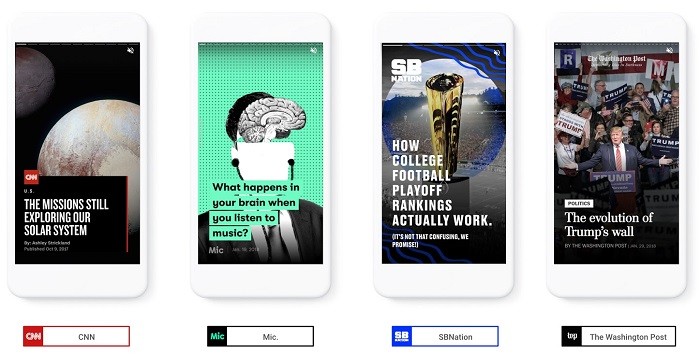A couple of years ago, Google introduced AMP which stands for Accelerated Mobile Pages. It was introduced with the aim of making it easier for publishers “to create mobile-friendly content once and have it load instantly everywhere”. Well, if you have ever clicked on an article link shared on Twitter, you must have noticed that the article would have loaded faster and would have looked better – devoid of any clutter. That’s because of AMP. However, it wasn’t restricted to Twitter only, as some articles that popped up in Google Search were also based on AMP. Well now, Google is going a step further by introducing AMP Stories.

Yes, that’s right. Google has introduced AMP Stories for Google Search, because Stories are all the rage right now. Ain’t they? The AMP Stories are exactly what they sound like. If you use Instagram, Facebook or Snapchat, then we assume you are pretty much aware of what Stories are.

The Google AMP Stories are based on the AMP Project that we talked about at the beginning of this article. These AMP Stories would pop-up in Google Search when you search for a publisher like CNN or The Washington Post. Yes, for now, AMP Stories would only show up when you search for specific publishers, as they aren’t currently available for all and only a select publishers are a part of the developer preview program.
The Google AMP Stories would also look similar to what Stories on other platforms like Instagram look. When you open an AMP Story from Google Search, you will see visually rich images, text or even small video clips in a slideshow format. You need to tap on the right side of the screen to view the next one, and, tap on the left to view the previous one.
However, having said that, as AMP Stories are a part of AMP Project, they would load up fast on a user’s mobile device.
“The mobile web is great for distributing and sharing content, but mastering performance can be tricky. Creating visual stories on the web with the fast and smooth performance that users have grown accustomed to in native apps can be challenging. Getting these key details right often poses prohibitively high startup costs, particularly for small publishers.” said Rudy Galfi, Product Manager for AMP at Google.
“AMP stories are built on the technical infrastructure of AMP to provide a fast, beautiful experience on the mobile web. Just like any web page, a publisher hosts an AMP story HTML page on their site and can link to it from any other part of their site to drive discovery. And, as with all content in the AMP ecosystem, discovery platforms can employ techniques like pre-renderable pages, optimized video loading and caching to optimize delivery to the end user.” Galfi further said.
The AMP Stories are available for everyone to try on their website, and, end users can also check out how a AMP Stories look by heading over to g.co/ampstories from their mobile device and searching for CNN or The Washington Post. Doing so would present you with a “Visual Stories” section that will show all the AMP Stories from the said publisher in a card-based layout.
Google has also said that it plans to bring AMP Stories to more Google products in the future.

![OnePlus teams up with Qualcomm to launch 5G device in 2019 3 OnePlus 5T Star Wars Limited Edition Hands-on [Images]](https://www.mobigyaan.com/wp-content/uploads/2017/12/OnePlus-5T-Star-Wars-Limited-Edition-Hands-on-Images-7.jpg)